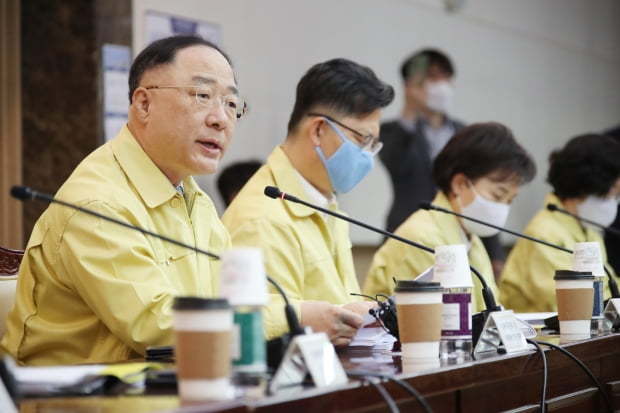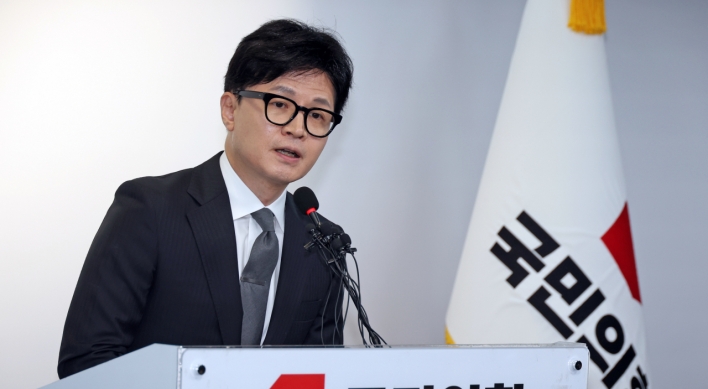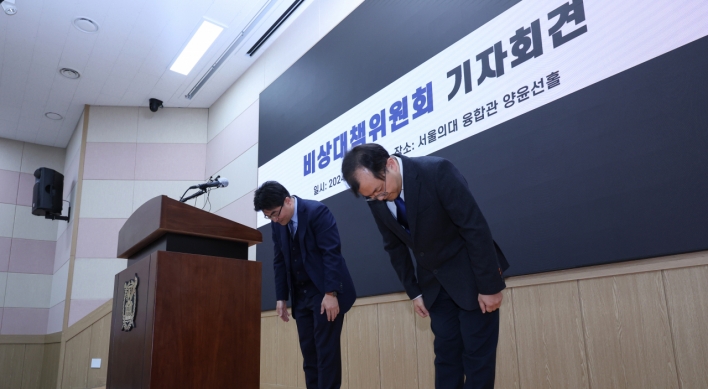W3.5tr post-pandemic recovery plan aims to create at least 550,000 jobs
Government to run fund for virus-hit industries, set up a W10tr SPV to stabilize bond market
By Bae HyunjungPublished : May 20, 2020 - 16:55

South Korea’s government vowed Wednesday to swiftly create at least 550,000 new jobs in the public sector as soon as it secures an additional budget of 3.5 trillion won ($2.8 billion).
The move came in line with the country’s efforts to brace for economic recovery after the ongoing COVID-19 pandemic.
“It is now time to gear up for economic recovery, while maintaining thorough everyday quarantine rules,” said Deputy Prime Minister and Finance Minister Hong Nam-ki in a meeting with economy-related ministers held at Seoul Government Complex.
The fiscal chief’s remarks came as schools reopened partly for high school seniors, some 80 days after the original opening day of March 2.
“(Korea) is capable of adding further momentum to its domestic economic recovery as unlike most developed nations, it has not enforced lockdown measures during the quarantine procedures,” Hong said.
Taking a cautious approach to the economic recovery road map, the Korean government suggested four policy pillars -- job creation for the youth and in the public sector, revitalizing actions for the local tourism industry, a subsidy operation scheme for key industries and establishing a special purpose vehicle to purchase low-credit corporate bonds.
Addressing the record job losses amid the epidemic fallout, Seoul earlier vowed to add 1.56 million new jobs, mostly in the public sector, hoping to eventually encourage the private sector to follow suit.
Of the total, 550,000 or more jobs will be created in the near future, as soon as the government secures its forthcoming 3.5 trillion won extra budget, which is slated to be submitted to the National Assembly in June and hopefully take effect within the same month.
Non-face-to-face, or untact, digital functions will account for some 100,000 posts, with 64,000 allocated to digital data management and content creation and 36,000 to post-COVID untact administrative services. Also, around 300,000 jobs related to quarantine and disaster prevention will be offered to the socially disadvantaged.
In a separate move to quell the local bond market, the government and the Bank of Korea will set up a 10 trillion won special purpose vehicle to directly purchase corporate bonds and commercial papers from companies with low credit ratings.
The SPV would consist of 8 trillion won worth of loans extended by the BOK and 2 trillion won worth of loans and investments by the Korea Development Bank, the nation’s policy lender. The KDB’s 1 trillion won investment would be funded through the state budget.
“(The SPV) will purchase corporate bonds and commercial papers with credit ratings as low as BB,” said Vice Finance Minister Kim Yong-beom in a press briefing.
The SPV will be financed in the form of capital call -- providing funds to partners whenever the need arises -- and could see its investment double to 20 trillion won if necessary, Kim added.
The move concerning SPV largely mirrored the US Federal Reserve’s creation of five SPVs in March, including the Primary Market Corporate Credit Facility and the Secondary Market Corporate Credit Facility. This allowed the Fed to lend money to SPVs, which are legal entities and in turn, has been purchasing corporate bonds and extend loans directly from and to US firms.
The US Treasury’s decision to use its Exchange Stabilization Fund to make initial $10 billion equity investments in each SPVs, reduces the Fed’s exposure to credit risks.
The Korean SPV plan will deal with risks in a similar manner, with around 20 percent of the exposure to credit risks “absorbed” by the government and the KDB, leaving relatively little possibility of risk for the central bank, the vice minister said.
By Bae Hyun-jung, Jung Min-kyung
(tellme@heraldcorp.com) (mkjung@heraldcorp.com)
The move came in line with the country’s efforts to brace for economic recovery after the ongoing COVID-19 pandemic.
“It is now time to gear up for economic recovery, while maintaining thorough everyday quarantine rules,” said Deputy Prime Minister and Finance Minister Hong Nam-ki in a meeting with economy-related ministers held at Seoul Government Complex.
The fiscal chief’s remarks came as schools reopened partly for high school seniors, some 80 days after the original opening day of March 2.
“(Korea) is capable of adding further momentum to its domestic economic recovery as unlike most developed nations, it has not enforced lockdown measures during the quarantine procedures,” Hong said.
Taking a cautious approach to the economic recovery road map, the Korean government suggested four policy pillars -- job creation for the youth and in the public sector, revitalizing actions for the local tourism industry, a subsidy operation scheme for key industries and establishing a special purpose vehicle to purchase low-credit corporate bonds.
Addressing the record job losses amid the epidemic fallout, Seoul earlier vowed to add 1.56 million new jobs, mostly in the public sector, hoping to eventually encourage the private sector to follow suit.
Of the total, 550,000 or more jobs will be created in the near future, as soon as the government secures its forthcoming 3.5 trillion won extra budget, which is slated to be submitted to the National Assembly in June and hopefully take effect within the same month.
Non-face-to-face, or untact, digital functions will account for some 100,000 posts, with 64,000 allocated to digital data management and content creation and 36,000 to post-COVID untact administrative services. Also, around 300,000 jobs related to quarantine and disaster prevention will be offered to the socially disadvantaged.
In a separate move to quell the local bond market, the government and the Bank of Korea will set up a 10 trillion won special purpose vehicle to directly purchase corporate bonds and commercial papers from companies with low credit ratings.
The SPV would consist of 8 trillion won worth of loans extended by the BOK and 2 trillion won worth of loans and investments by the Korea Development Bank, the nation’s policy lender. The KDB’s 1 trillion won investment would be funded through the state budget.
“(The SPV) will purchase corporate bonds and commercial papers with credit ratings as low as BB,” said Vice Finance Minister Kim Yong-beom in a press briefing.
The SPV will be financed in the form of capital call -- providing funds to partners whenever the need arises -- and could see its investment double to 20 trillion won if necessary, Kim added.
The move concerning SPV largely mirrored the US Federal Reserve’s creation of five SPVs in March, including the Primary Market Corporate Credit Facility and the Secondary Market Corporate Credit Facility. This allowed the Fed to lend money to SPVs, which are legal entities and in turn, has been purchasing corporate bonds and extend loans directly from and to US firms.
The US Treasury’s decision to use its Exchange Stabilization Fund to make initial $10 billion equity investments in each SPVs, reduces the Fed’s exposure to credit risks.
The Korean SPV plan will deal with risks in a similar manner, with around 20 percent of the exposure to credit risks “absorbed” by the government and the KDB, leaving relatively little possibility of risk for the central bank, the vice minister said.
By Bae Hyun-jung, Jung Min-kyung
(tellme@heraldcorp.com) (mkjung@heraldcorp.com)



![[Exclusive] Korean military set to ban iPhones over 'security' concerns](http://res.heraldm.com/phpwas/restmb_idxmake.php?idx=644&simg=/content/image/2024/04/23/20240423050599_0.jpg&u=20240423183955)

![[Graphic News] 77% of young Koreans still financially dependent](http://res.heraldm.com/phpwas/restmb_idxmake.php?idx=644&simg=/content/image/2024/04/22/20240422050762_0.gif&u=)




![[Pressure points] Leggings in public: Fashion statement or social faux pas?](http://res.heraldm.com/phpwas/restmb_idxmake.php?idx=644&simg=/content/image/2024/04/23/20240423050669_0.jpg&u=)








